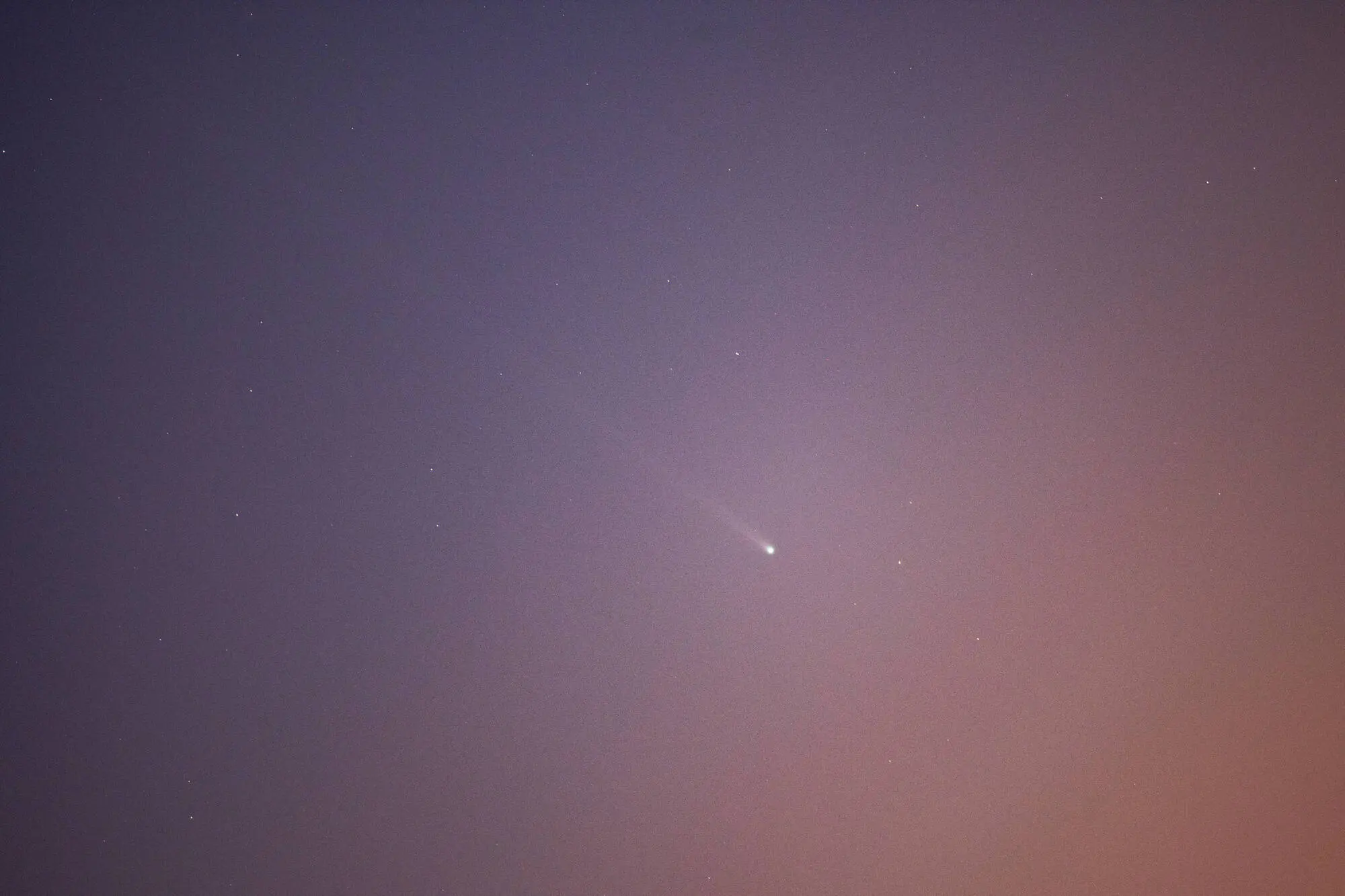A rock just skimmed past Earth at 270 miles distance, raising questions about asteroid detection
-
 Comet C/2023 P1 (Nishimura) is seen in L'Aquila, Italy, on september 10th, 2023. Discovered in August by a Japanese amateur astronomer, comet Nishimura (C/2023 P1) will reach the point of maximum approach to Earth on September 13 and will acquire its maximum brightness on September 17. It will probably be visible to the naked eye, as well as with telescopes and cameras. (Photo by Lorenzo Di Cola/NurPhoto via Getty Images)
Comet C/2023 P1 (Nishimura) is seen in L'Aquila, Italy, on september 10th, 2023. Discovered in August by a Japanese amateur astronomer, comet Nishimura (C/2023 P1) will reach the point of maximum approach to Earth on September 13 and will acquire its maximum brightness on September 17. It will probably be visible to the naked eye, as well as with telescopes and cameras. (Photo by Lorenzo Di Cola/NurPhoto via Getty Images)A small asteroid passed incredibly close to Earth, coming within just 270 miles (435 kilometers) of the planet — a distance closer than many satellites that orbit our world. Scientists noticed the object only after it had already gone by, leading to new discussions about how well we can detect such small space rocks before they reach our planet.
The close pass that caught scientists by surprise
Astronomers confirmed that the asteroid was spotted only after it made its closest approach. While the rock was small and posed no danger, its sudden appearance has caught the attention of researchers around the globe. It did not enter Earth’s atmosphere and caused no damage, but its proximity has highlighted the gaps in our space monitoring systems.
NASA and other international space agencies constantly scan the skies for near-Earth objects, also known as NEOs. These include asteroids and comets that orbit close to our planet. Larger ones are easier to detect because they reflect more sunlight and move more slowly, but smaller objects, like this one, are much harder to see. They often slip by undetected until they have already passed because they are dim, fast-moving, and difficult to track with ground-based telescopes.
Why late detection matters
Experts explained that although lower asteroids infrequently pose a serious trouble, the fact that this one went unnoticed until after passing Earth shows that the discovery system still has room for enhancement. Indeed a small asteroid can beget damage if it were to hit the atmosphere at the right angle.
Events like this emphasize the need for better technology and briskly cautions. Space agencies are now working on using new tools to detect these fast- moving objects.
These include infrared detectors, which can pick up heat rather of light, AI-based software to reuse huge quantities of data swiftly, and space-oriented gadgets/tools that can overlook areas of the sky beyond the reach of ground telescopes.
No danger this time, but a lesson for the future
Officers have verified that the asteroid didn't enter the atmosphere and posed no danger so far to people or property. Still, its short distance — nearly the same as where the International Space Station orbits shows just how close it came to Earth. Astronomers noted that while similar near misses can be from time to time, they frequently go unnoticed because of how small and fast these jewels are.
Every time an asteroid passes this close, scientists gain new information about how these objects move through space. The data helps them upgrade tracking systems and ameliorate models used to prognosticate the routeways of near- Earth asteroids.
Improving monitoring systems
NASA’s Planetary Defense Coordination Office and the NEO Surveyor Mission are working to find more small asteroids near Earth. These programs help scientists spot space rocks earlier and give warnings if any could be dangerous.
The asteroid that passed by this week was not a threat. Still, it reminds scientists that space is always active and unpredictable. Events like this show why it’s important to keep improving technology and research to track objects that move close to our planet.
TOPICS: Asteroid